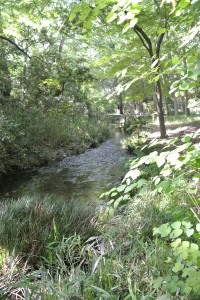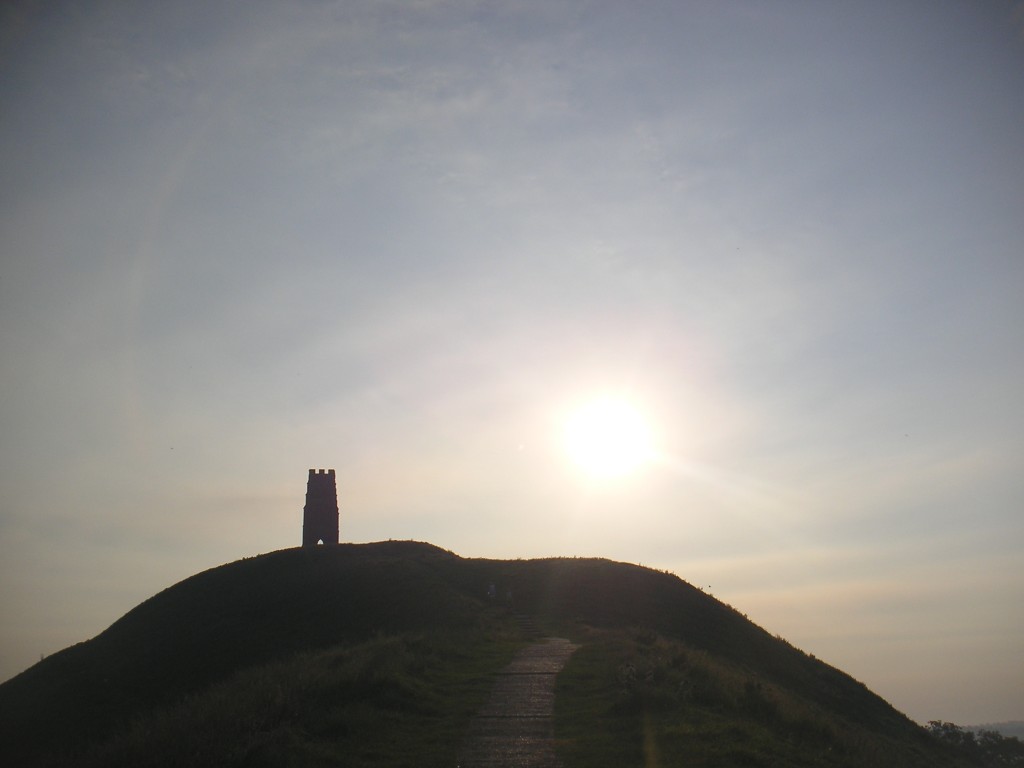
Some places radiate with a special energy
Ley lines
In 1921 an amateur archaeologist named Alfred Watkins noticed on a map that various ancient monuments and spiritual places were aligned in a straight line. He spent the following years researching the phenomenon of what he termed ley lines, and in 1925 published The Old Straight Track in which he proposed that they were traders’ tracks dating back to the Stone Age.
The idea was taken up in the 1960s, when interest in the occult led to theories that they might be lines of energy or magnetic nodes. There was talk too about UFOs being attracted by ley lines. By the 1970s ley hunters began to split into two camps: one that researched possible ancient tracks; and one that investigated lines of energy running through the earth, akin to meridian lines in acupuncture. Nowadays the notion of energy lines has become widely accepted, and Glastonbury Tor is held to derive its power from standing at a conjunction of those of St Michael and St Mary.
Good vibrations
There’s nothing specially New Age about the notion of place and power. For the Romans it was taken for granted that places had a spirit of place – the genus loci. Personified, it became the guardian deity of the locale.
Down the ages artists and writers have tried to capture the spirit of place in painting and words. In modern times D.H. Lawrence was instrumental in popularising the notion:
‘Different places on the face of the earth have different vital effluence, different vibration, different chemical exhalation, different polarity with different stars: call it what you like. But the spirit of place is a great reality.’

Kyoto's 'power spot': the woods at Shimogamo Jinja
Power spots
You’d expect animist religions to be sensitive to the spirit of place, and many Shinto shrines are clearly situated at places that resonate with power. Some are associated with striking natural phenomena, such as Nachi Shrine located by a waterfall radiating negative ions. Others celebrate holy hills, sacred rocks and sites of spirituality.
‘There were no bogs before Dickens, no sunsets before Turner,’ said the great Oscar Wilde. It’s a typical Wildean paradox, startling yet true in its own way. It shows the significance of celebrating the physical world in art and religion, by helping us see things as if for the very first time. For me the great attraction of Shinto and paganism lies precisely in this: in helping us be more aware of the spirit of place, of the wonder of creation, of the special qualities of place and natural phenomena.
Recent years have seen a boom in ‘power spots’ in Japan, many of which are famous or ancient shrines. How far this has borrowed from New Age notions in the West I’m not sure, but the boom was sparked by a television programme about psychic matters called Aura no izumi (Well-spring of the aura), starring Ehara Hiroyuki. One of his books Shinkikou (2005) promoted the idea of power spots. I’ve got some of the popular power spot series which followed, based on a mix of tourism and whatever special power the place or shrine is traditionally thought to possess.
Booms come and go in Japan, but as long as humans don’t destroy it the spirit of place will continue undaunted. Shinto shrines mark its most striking manifestation, and I’m pleased to announce in this respect the beginnings of a new website on Shinto Shrines by my collaborator, Joseph Cali. Please see http://shintoshrinesofjapanblogguide.blogspot.jp/

Sunrise over Glastonbury Tor (Photo courtesy of Keiko Futaguchi)

Hi John:
I have been enjoying your posts from Britain, but I am going to quibble, not with one word, but with one letter: the Latin for the numinous spirit of place is “genius loci.” I find this interesting, since English has incorporated the recognition of excellence in a human being as “genius,” and in ancient Rome, the Emperor’s vibrant Spirit was seen as the Genius Loci of the entire realm–much as in traditional Japan. Finally, the Genii Loci were often seen as energizing a special or important nexus, and these were called Lares Compitales: Spirits of the crossroads. Like you, I find the ancient animist sensitivities exciting and inspiring.
From many years of research and walking the ley lines I can point out that some originate at stone circles, placed above geological faults, which are then transmitted across country, using standing stones as amplifiers (again over faults) ending at burial grounds. Their purpose was to dump the malevolent energy from the graves back into the planet, and probably to use the positive energy from their ancestors to help their health and finance (every grave has two spirals, one positive and one negative). Later Irish Round Towers were used for this purpose, as they were designed and tuned to attract these black “spirit lines” – also at Fortingall, Scotland, I found a cup-marked stone which served the same purpose. See my book on the ley system in Scotland – “Ley Lines and Earth Energies”.
This post is on 19 spot in google’s search results, if you want more visitors,
you should build more backlinks to your blog, there is one trick to get free, hidden backlinks from authority
forums, search on youtube: how to get hidden backlinks from forums